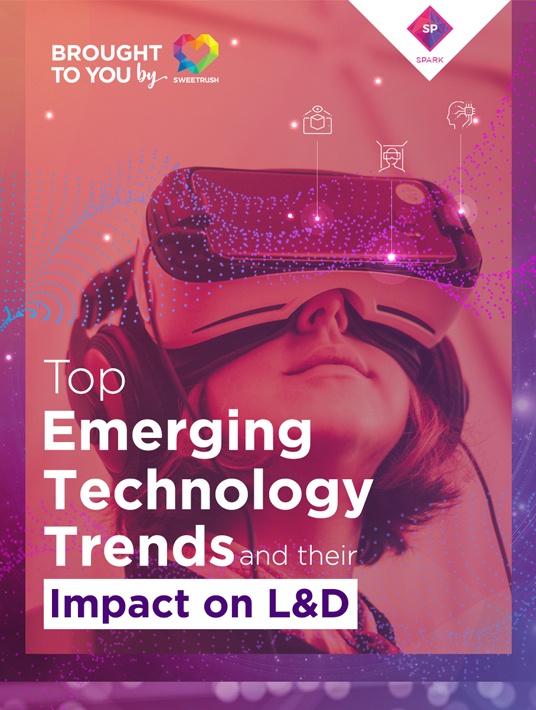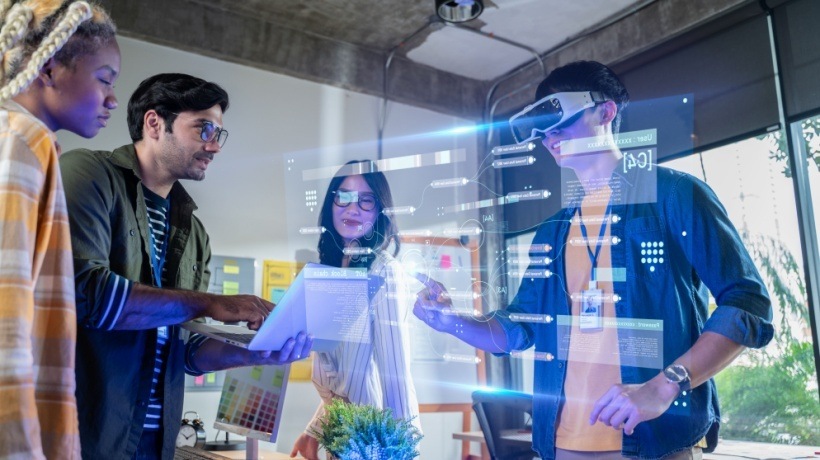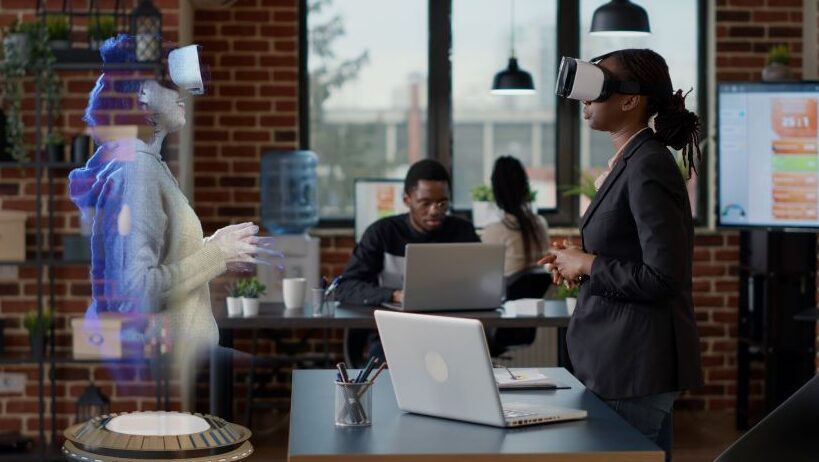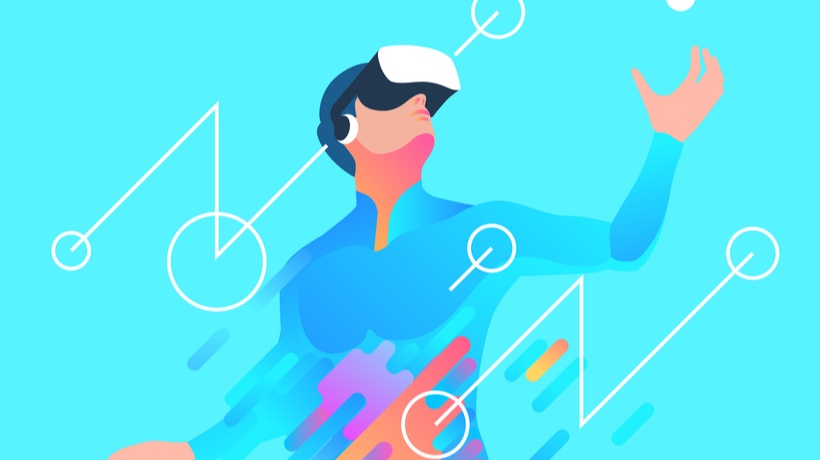Virtual Reality Training: How To Boost Employee Performance Using VR
Not long ago, I asked Mary Gannon, Ph.D., the senior learning strategist at SweetRush, how Virtual Reality training (VR) can enhance employee performance. Her answer was a plain and simple truth:
“VR training educates employees, and education always leads to better work performance,” she said.
If we look a little more closely, we find that VR can prepare employees in a number of specific ways. In this article, we’ll explore some of them and their effects on performance improvement. Take a look!

Get The Knowledge, Not The Risks
Imagine your first day working as a firefighter or pilot. Dangerous or high-stress jobs can benefit greatly from VR training as a method for onboarding. VR gives newcomers an accurate approximation of their new workplace even before they arrive.
“VR transports learners to a different world, and it allows people to familiarize themselves with new tasks that might be dangerous, or too difficult to repeat in real life,” says Justin Mitchell, a creative engineer at SweetRush.
Anticipating a great demand for commercial flights over the next 20 years, Boeing recently invested in a VR training program for pilots; the company has also been using VR to train the engineers in charge of building the planes [1]. Both tasks are high-stress, and it’s difficult to introduce new employees to the environment. VR changes that.
In a similar manner, SweetRush recently developed a VR training program for a major transportation company. In it, learners were able to walk around a repair shop, identifying safety hazards such as oil spills or tools lying on the floor.
“By practicing in a controlled, virtual environment, learners can better recognize those risks in real life,” says Adrian Soto, director of Future Technologies at SweetRush SPARK.
Through immersion, VR training can expose employees to those stressful scenarios, allowing them to make cost-free mistakes and gain confidence and knowledge before they face the real-world counterpart.
New Hires, All Aboard!
Virtual onboarding is beneficial not only for high-risk positions, however. VR onboarding can go a long way toward making all new employees feel comfortable in the workplace. It can also reduce the workload for the Human Resources department by automating monotonous tasks.
Honeygrow, a Philadelphia-based, fast-casual restaurant chain, reported that within 30 days of implementing VR employee onboarding, the number of team members certified on culture and training soared from 50 to 77% [2].
As Professor Edgar Dale proposed in his Cone of Experience theory, we remember 10% of what we read, 20% of what we hear, and 90% of what we do [3].
“In VR, learners acquire knowledge through interaction,” Gannon says. “It is as close to being in the real world, having firsthand experience, as we can possibly do.”
Therefore, having newcomers perform onboarding tasks in a virtual environment, instead of simply reading or hearing about them, may lead to a much stronger recall.
Travel The World From Your Office
During a keynote presentation at Mobile Marketer's Mobile FirstLook: Strategy 2015 conference, Katrina Craigwell, global manager of Digital Marketing at GE, showed off a 3D experience that her team created at a recently launched research center in Rio de Janeiro [4].
The VR program mimicked GE's subsea oil technology, used to collect and discover gas and oil deposits in the ocean. Strapping on a headset, GE employees could explore one of the company's most remote facilities.
Just as Mitchell said, “VR transports learners to a different world,” or, in this case, a different company location.
Here at SweetRush, we recently worked on a similar project. We partnered with Hilton to create a VR training program that allowed learners to experience working in a hotel and dealing with the physical challenges and complex tasks that Hilton employees face every day. Instead of flying executives from all over the country, Hilton employees could simply strap on a VR headset and step into a virtual version of a hotel thousands of miles away.
For employees, VR offers an exciting new way to learn, while for employers, there’s the potential of significant reduction of training-related travel costs.
Better Customer Service, Better Sales
Through VR, we are able to simulate another person's experience. While in a VR program, you can see what another person sees, helping you better understand, appreciate, and empathize with them.
Imagine what could be achieved when applying similar experiences to customer-service training. A VR program can help retail store associates view a specific experience, say, Black Friday frenzy, from the customer's point of view. Such a perspective can give new employees a realistic sense of situations customers face, so they can have more empathetic interactions with customers.
VR training can maximize learning in the shortest time possible. This can have a profound impact in the field of sales, as the technology can quickly and effectively upgrade the performance of retail employees. VR training can also help all sales employees get better at their job, not just those with the best sales instincts.
For example, in a VR project we’ve been working for a major motor company, the SPARK team developed a scenario in which learners were challenged to identify clues that were present in a car. From those clues, the learners had to come up with the car parts, such as tires, best suited for each potential client. After that, the employees were capable of offering better customer service and giving recommendations that were effective for clients.
As Colleen Frances puts it [5]:
“Those who fully adopt and master the technology that’s being made available to them will also become highly valued members of the workforce. Knowledge will be less of a hierarchy and much more flat across the organization.”
VR training can go a long way in preparing and enhancing the performance of employees. It can prepare them for faster reaction times and better decision-making. VR also enables safer environments for high-risk tasks and friendlier, faster onboarding processes. Download the eBook Top Emerging Technology Trends And Their Impact On L&D to see how the emergence of virtual reality and augmented reality can open up new ways of working for L&D professionals. Learn why they are new powerful tools in teaching and affecting behavioral change and how they can help you achieve your business objectives.
If you want to discover more fantastic features you need to implement Virtual Reality in your organization, check out the webinar Virtual Reality: Real-World Hilton/SweetRush Project Case Studies. It is brought to you by SweetRush and teaches everything you need to know to run an exceptional VR learning program.
References:
- Boeing Bets On VR & AR For Pilot Training
- Why This Restaurant Chain Has Started Using VR to Train Employees
- Following the VR Plot Line in Education
- GE’s First Stab at Virtual Reality Takes You Under Water
- Technology’s Role in Sales: Adapt and Adopt or Get Left Behind










